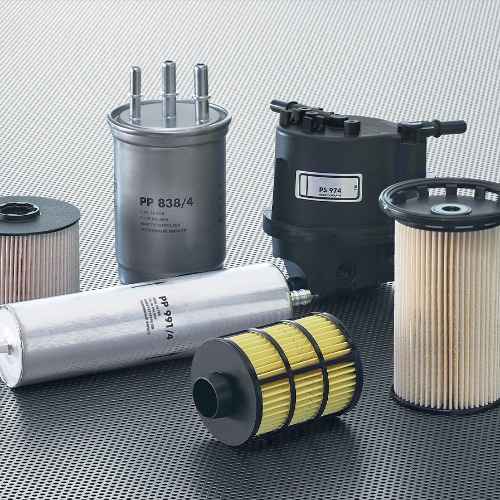To install a screw-in fuel filter, follow these steps:
Gather the necessary tools and materials: You'll need a new screw-in fuel filter, a wrench or socket set, safety glasses, and shop towels or rags.
Locate the existing fuel filter: The fuel filter is typically located along the fuel line, either under the vehicle or in the engine compartment. Refer to your vehicle's manual or consult a repair guide for its exact location.
Prepare for installation: Ensure the engine is cool and relieve the fuel system pressure. You can do this by removing the fuel pump relay or fuse and then starting the engine until it stalls. This step is crucial for your safety as it reduces the risk of fuel spraying when disconnecting the old filter.
Disconnect the old fuel filter: Put on safety glasses to protect your eyes from fuel spray. Place shop towels or rags beneath the filter to catch any spilled fuel. Use a wrench or socket set to loosen and remove the fittings on both ends of the fuel filter. There may be residual fuel in the lines, so be prepared for some fuel leakage.
Install the new fuel filter: Take the new screw-in fuel filter and apply a small amount of clean engine oil to the O-ring or gasket on the filter. This helps ensure a good seal and makes future removal easier. Thread the new filter onto the fuel line connections by hand, ensuring it's properly aligned.
Tighten the fittings: Use a wrench or socket set to securely tighten the fittings on both ends of the fuel filter. Take care not to overtighten, as it may damage the fittings or the filter.
Restore fuel system pressure: Reinstall the fuel pump relay or fuse to restore power to the fuel system.
Inspect for leaks: Start the engine and let it run for a few minutes while inspecting for any fuel leaks around the filter and fittings. If you notice any leaks, immediately turn off the engine and double-check the tightness of the fittings.
Clean up: Dispose of the old fuel filter properly and clean up any spilled fuel using a suitable absorbent material. Ensure all tools are properly stored and the work area is clean.


1. These screw-in fuel filters, do not contain any internal valves. This is due to the fact that only pure fuel should enter the combustion chamber of the engine.
2. Screw-in fuel filters are better for the engine to stop working because of a lack of fuel flow (obstructed filter) than for it to be powered by contaminated fuel.
3. In the case of screw-in fuel filters, the likelihood of accidental introduction of impurities to the fuel system during the replacement of filters is minimal.



 English
English Español
Español











 ++86 183 3391 1399
++86 183 3391 1399


 +86 183 3391 1399
+86 183 3391 1399
 +86 187 3296 0060
+86 187 3296 0060 Wangshigong Village, Wei County, Xingtai City, Hebei Province, China
Wangshigong Village, Wei County, Xingtai City, Hebei Province, China
